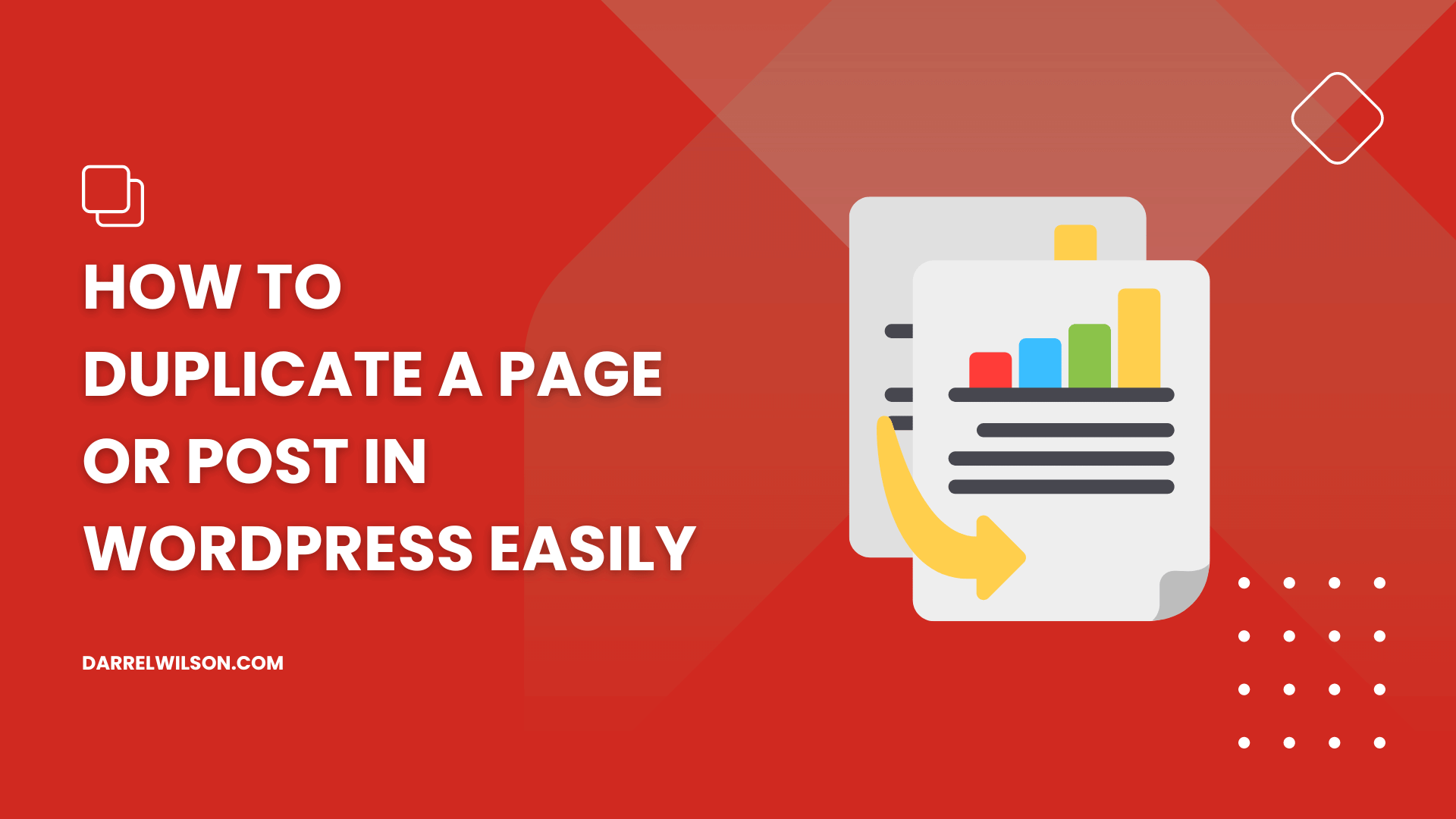


Need a duplicate of a post or page?
By the end of this guide, you will learn different methods of duplicating a page or post in WordPress from plugins to page builders.
Here are some of the contents of this guide:
Ready? Let’s get started.
Duplicating a WordPress page or post allows you to repurpose high-performing content for different products or services without starting anew.
It also aids in maintaining a consistent format across multiple pages or in conducting A/B testing with slight variations in content to optimize user engagement.
Additionally, duplicating allows for extensive updates or scheduled changes to be made on a copy without affecting the live version.
Duplicating a page or post in WordPress can be achieved through various methods, each catering to different user preferences and technical expertise levels.
Plugins are the most user-friendly way to duplicate posts or pages in WordPress.
Below are some of the most commonly used duplication plugins and the steps on how to use them:
Yoast Duplicate Post allows users to clone posts of any type or copy them to new drafts for further editing.
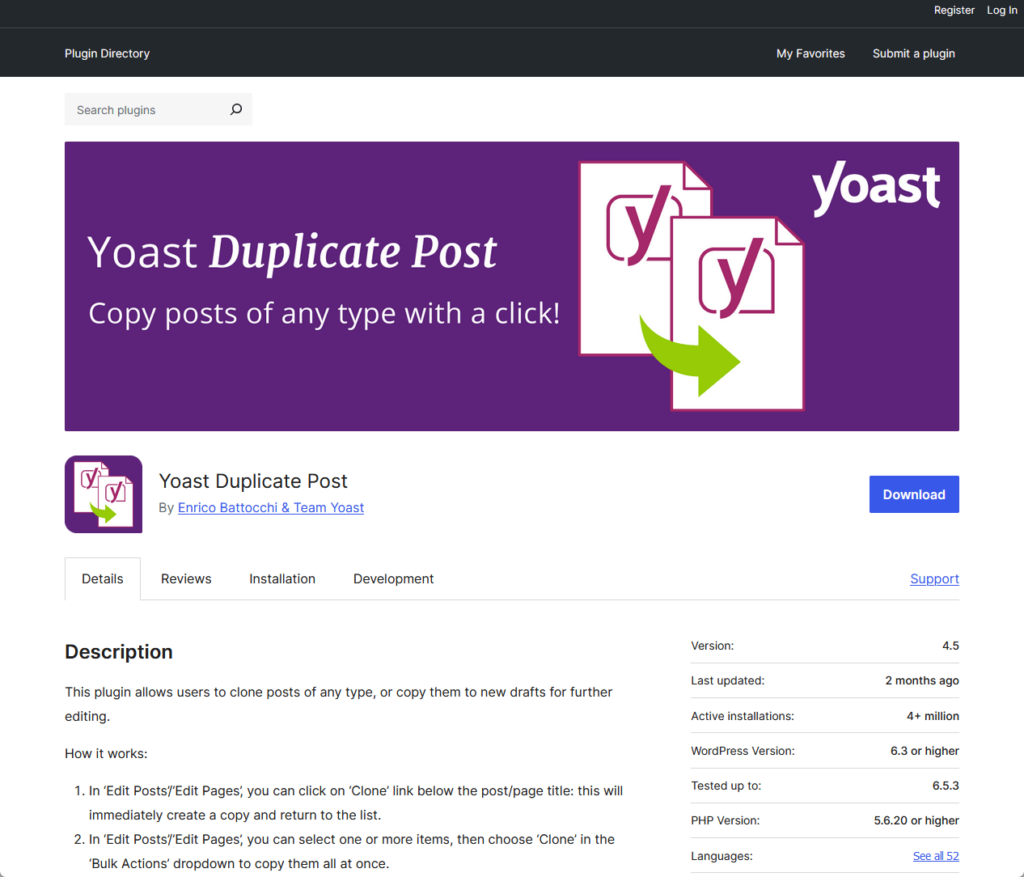
To duplicate a post using this plugin, you just need to:
Ensuring your site’s hosting can handle your website’s needs is just as important.
Hostinger offers affordable, high-performance hosting solutions that complement your WordPress activities.

Discover the Hostinger advantage for your WordPress site:
With Hostinger, you’re not just choosing a web host:
You’re opting for a partner that ensures your WordPress site performs optimally, no matter how much content you duplicate.
This plugin provides a straightforward solution for cloning content and enables users to easily duplicate pages or posts with customization options for copied content.
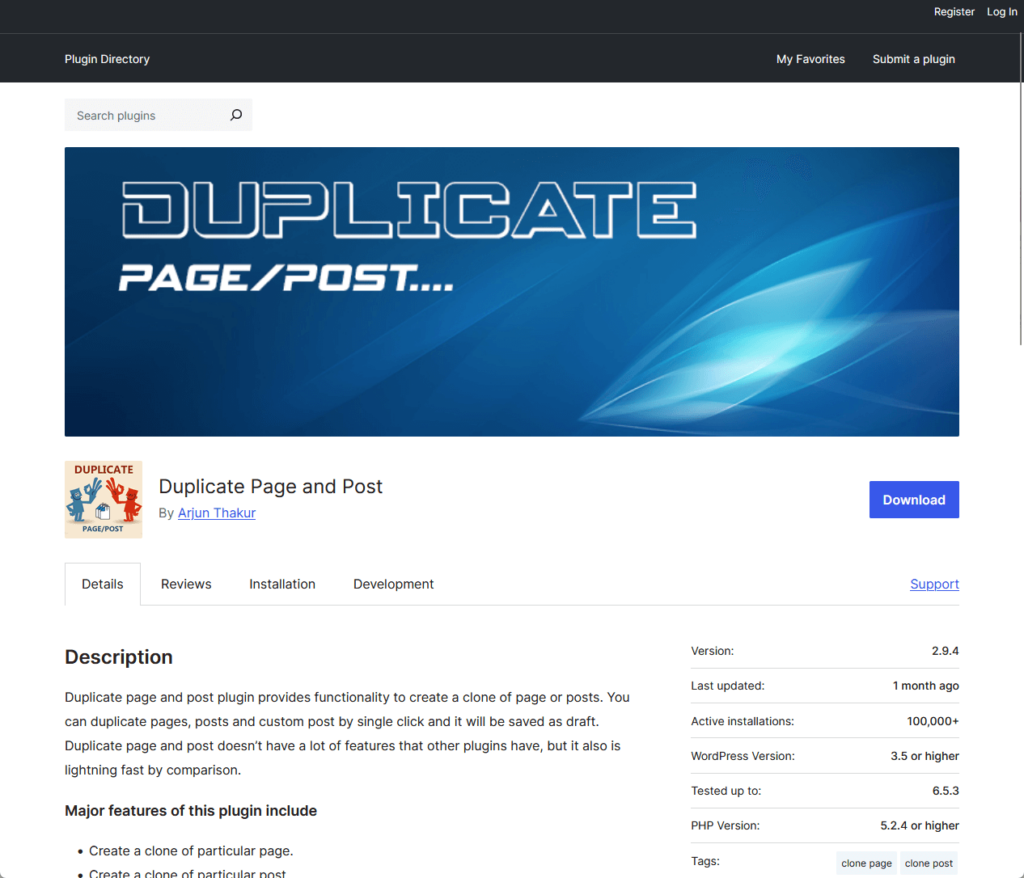
To use this plugin, just do the following steps:
Duplicate Page enables one-click duplication of posts, pages, and custom post types with options for saving copies as drafts, private, public, or pending.
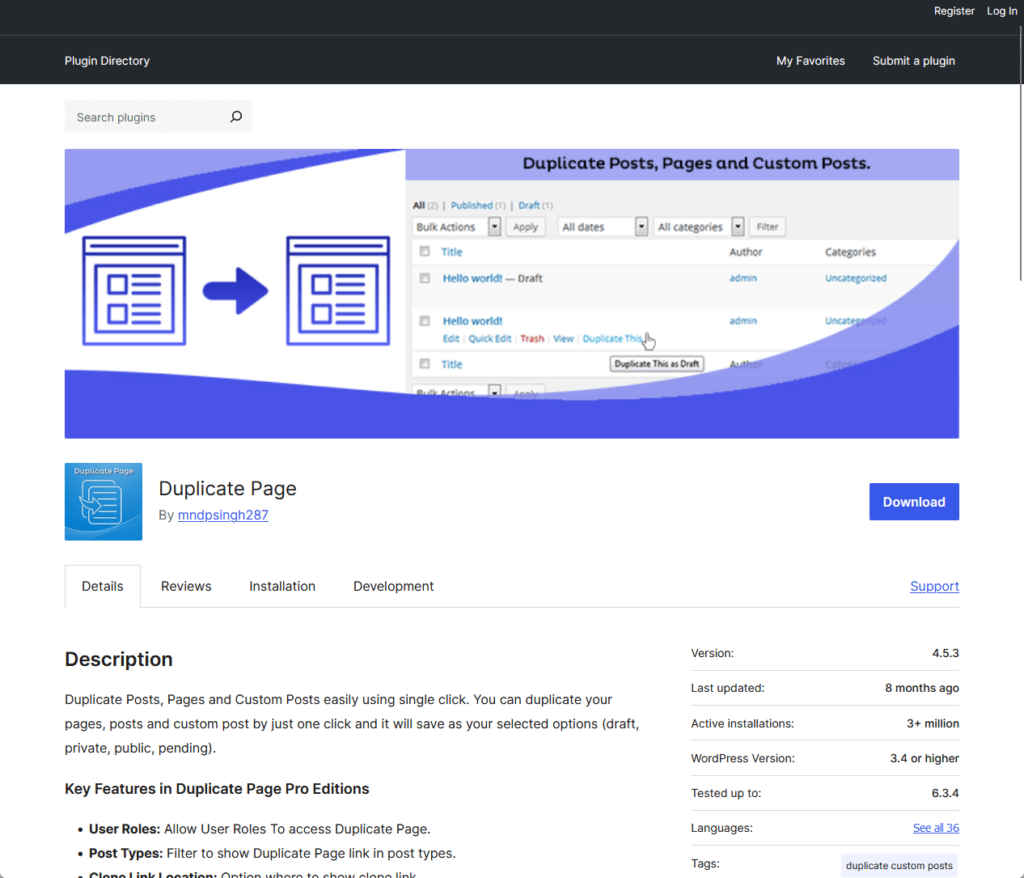
Below are the steps on how to use this plugin:
You can also go to the settings to change the publishing status of the duplicates (draft, private, public, or pending).
This plugin offers the capability to create exact duplicates of any post or page, including custom post types, custom fields, and custom taxonomies.
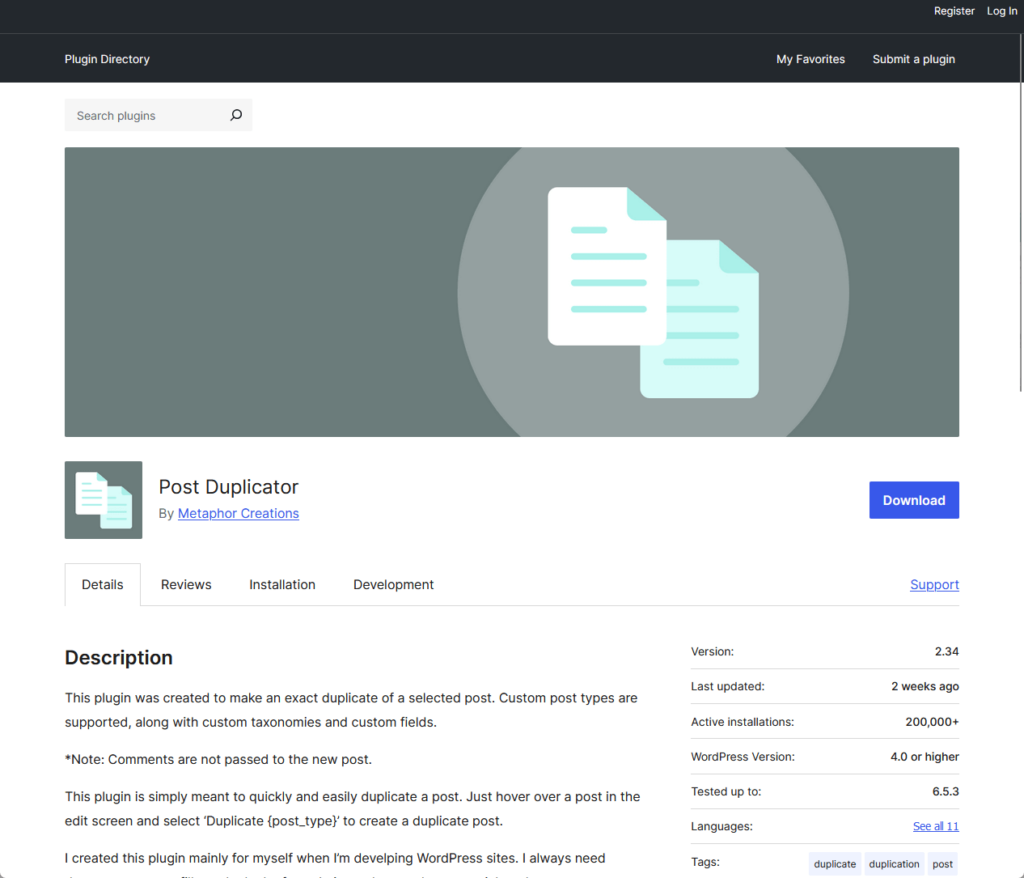
To use it, just follow these steps:
Note that since it’s an exact copy, all metadata and custom fields are also included.
For users who prefer not to use plugins, WordPress offers manual methods to duplicate content using either the Block Editor (Gutenberg) or the Classic Editor.
Unfortunately, this will only copy the content — metadata and field columns are not included since this is a simple copy-and-paste.
Open the page or post first that you want to duplicate, select everything on the page (ctrl + a), and then copy the content (ctrl + c).
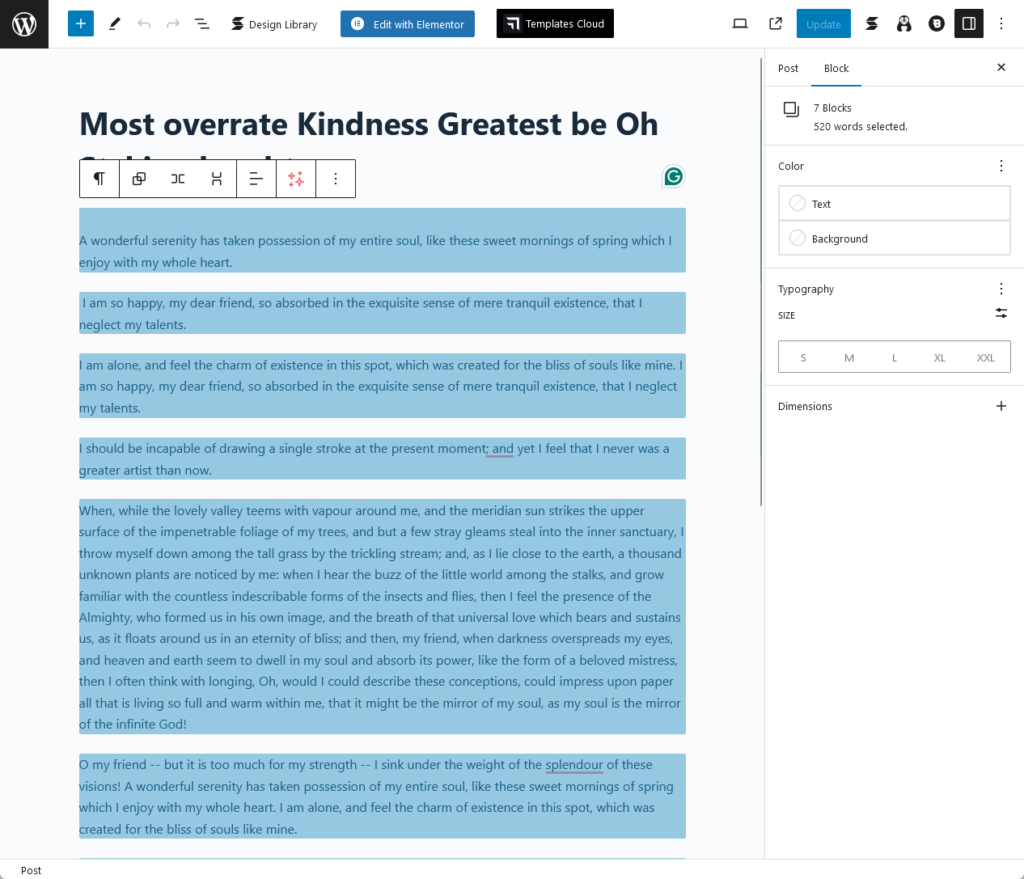
⚠️ Note: Selecting everything won’t include the title of the post or page, so you will have to copy and paste the title separately.
From there, you need to create a new post or page, which will serve as a duplicate (although there’s no content here yet).
Finally, copy (ctrl + v) the content and the title into the page, save the draft, and then you will have the exact duplicate of the content.
For users who utilize page builders to create their WordPress sites, many of these tools come with built-in features that simplify the process of duplicating content.
Elementor, one of the popular page builders, offers an easy way to duplicate pages through its template system.
You can simply save a post or a page as a template in Elementor:

From there, you can reuse that template (essentially duplicating it) when adding a new page or post from the “my templates” tab.
Other powerful page builders also have a similar functionality or feature that allows you to save a post or page as a template and thereby duplicate it. 🙂
👉 Related: Brizy Page Builder Review: Best Affordable Builder?
There’s actually one more method you can use to duplicate a post or page.
Unfortunately, that includes inserting a PHP code snippet into the functions.php file to introduce a duplicate action for posts and pages.
I don’t advise this to newbie users since it can potentially ruin your WordPress site (especially if you don’t know what you’re doing) without any backups.
But if you insist, you can use this snippet and add it at the end of the functions.php file:
function rd_duplicate_post_as_draft(){
global $wpdb;
if (! ( isset( $_GET['post']) || isset( $_POST['post']) || ( isset($_REQUEST['action']) && 'rd_duplicate_post_as_draft' == $_REQUEST['action'] ) ) ) {
wp_die('No post to duplicate has been supplied!');
}
/*
* Nonce verification omitted for brevity, but do include it in your code for security
*/
// Get the original post id
$post_id = (isset($_GET['post']) ? $_GET['post'] : $_POST['post']);
// And all the original post data then
$post = get_post( $post_id );
// If you have post data
if (isset( $post ) && $post != null) {
// Create a duplicate of the post and insert it into the database
$args = array(
'post_title' => $post->post_title,
'post_content' => $post->post_content,
'post_status' => 'draft',
'post_type' => $post->post_type,
'post_author' => $post->post_author,
'post_date' => current_time('mysql'),
);
$duplicate_post_id = wp_insert_post( $args );
// If you need to duplicate meta data and taxonomies, you can do so here
// Redirect to the post edit screen for the new draft
wp_redirect( admin_url( 'post.php?action=edit&post=' . $duplicate_post_id ) );
exit;
} else {
wp_die('Post creation failed, could not find original post: ' . $post_id);
}
}
add_action( 'admin_action_rd_duplicate_post_as_draft', 'rd_duplicate_post_as_draft' );
// Add the duplicate link to action list for post_row_actions
function rd_duplicate_post_link( $actions, $post ) {
if (current_user_can('edit_posts')) {
$actions['duplicate'] = '<a href="' . wp_nonce_url('admin.php?action=rd_duplicate_post_as_draft&post=' . $post->ID, basename(__FILE__), 'duplicate_nonce' ) . '" title="Duplicate this item" rel="permalink">Duplicate</a>';
}
return $actions;
}
add_filter( 'post_row_actions', 'rd_duplicate_post_link', 10, 2 );After that, you will see a new duplicate option under each post or page when viewing them in all posts or all pages screen.
The method you choose to duplicate a page or post in WordPress largely depends on your preference, technical skill level, and specific needs.
Plugins offer the most straightforward approach, manual methods, and custom code provide more control and flexibility, and page builders cater to those who prefer a visual approach.
But regardless of the method, what’s important is the consistency and efficiency of website management.
Why not enhance your site’s design with our premium Elementor template kits?
These kits are designed to simplify your website updates and provide a polished look without constant tweaking.

Secure lifetime access to all premium Elementor template kits:
Feel the convenience and style of our Elementor template kits and keep your site visually compelling and up-to-date with minimal effort